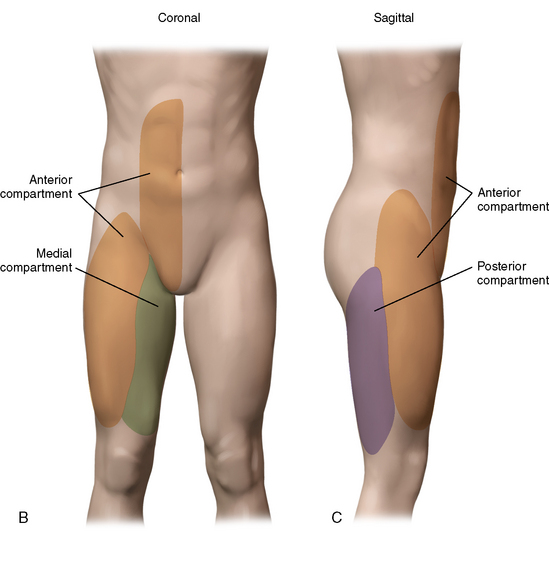CHAPTER 38 Surgical Treatment for Athletic Pubalgia (“Sports Hernia”)
Basic science
The pubic musculature outside of the hip joint consists of a vast set of muscles and soft tissues. The anterior pelvis includes multiple structures (excluding the hip, sacrum, and spine) such as the lower abdominal soft tissues; both sides of the pubic symphysis; and multiple thigh and pelvic adductors, abductors, flexors, extendors, and rotators. We think in terms of three compartments of muscles or other attachments that provide ligamentous- type support (Figure 38-1). The anterior compartment consists mainly of the abdominal muscles, including the sartorius, the anterior attachment of the psoas, portions of the quadriceps, and some complex interdigitations with fibers from the thighs and the medial and posterior pelvis. The posterior compartment consists primarily of the hamstrings, a portion of the adductor magnus, several key nerves, and an artery. The medial compartment consists of the most important thigh components, which include the three adductors that attach to the symphysis, the gracilis, the obturator externus, and several other structures.
Indications
< div class='tao-gold-member'>











